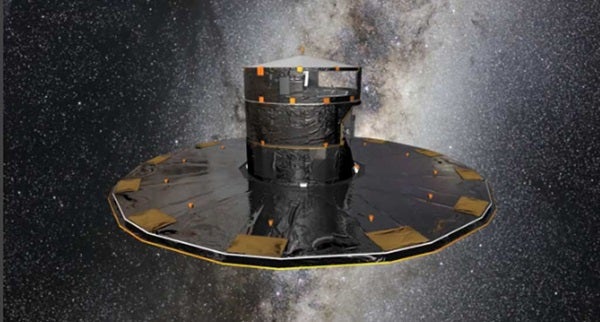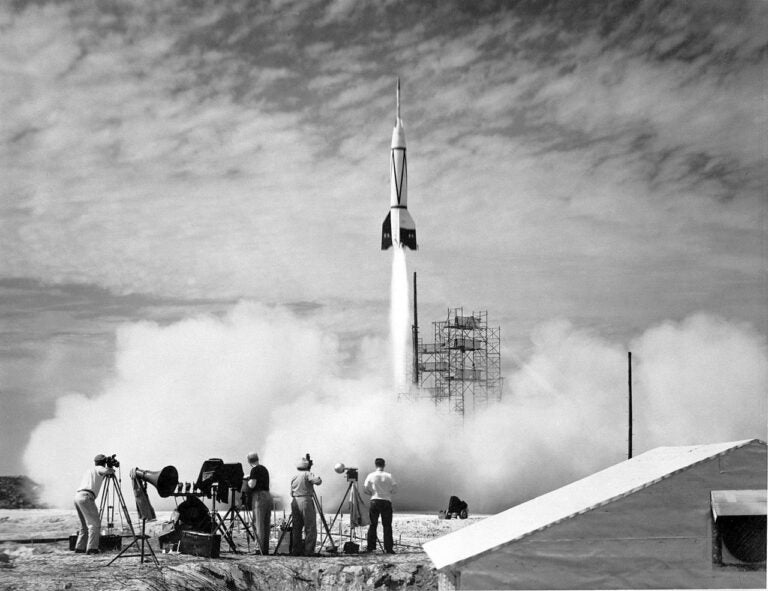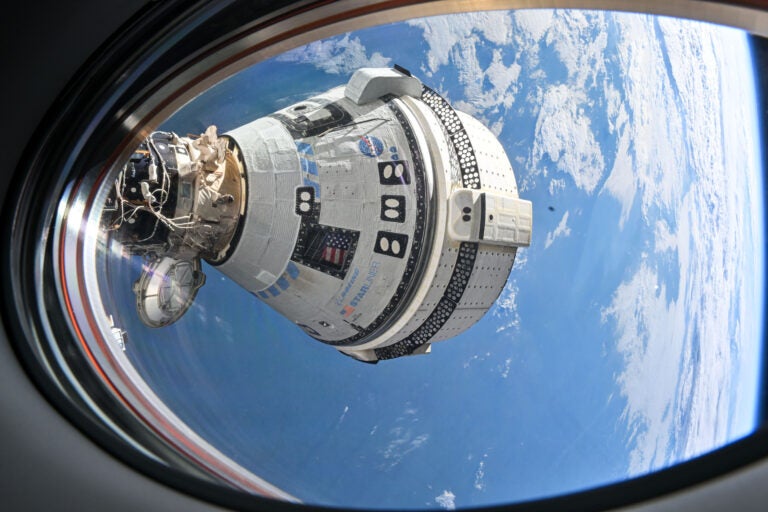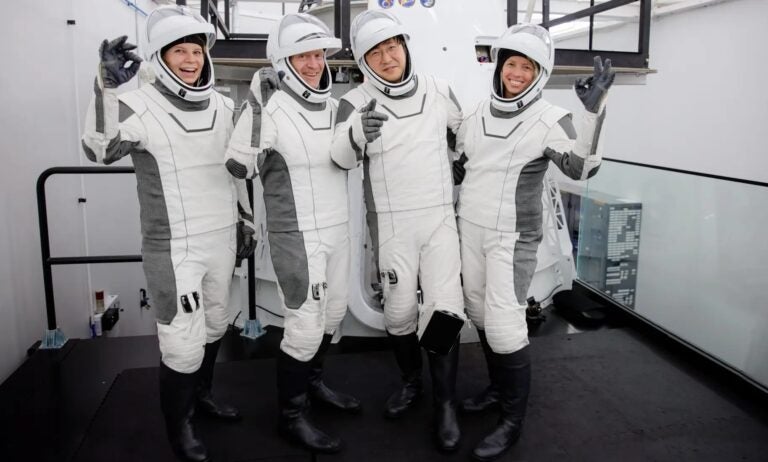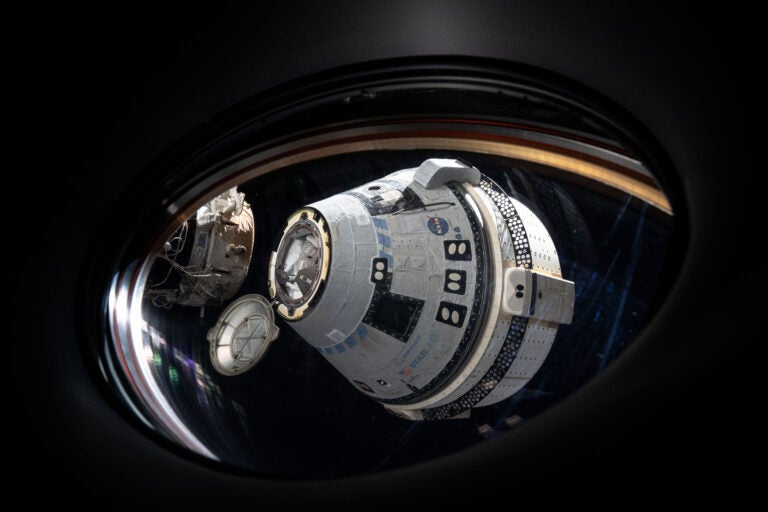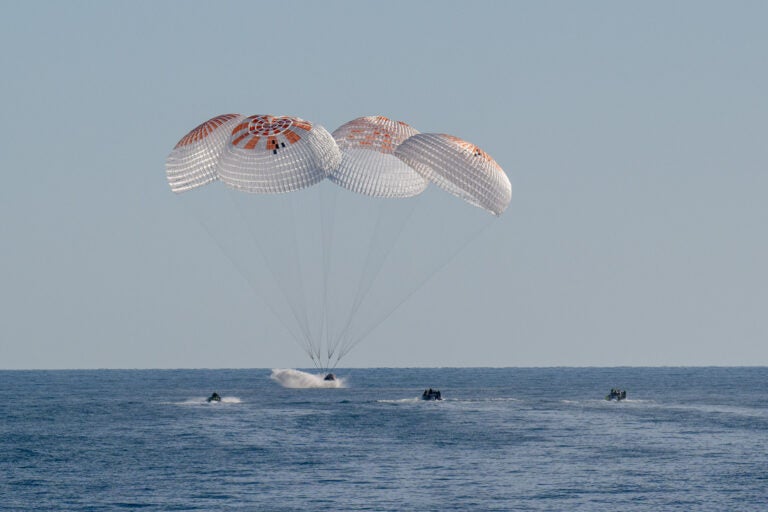The satellite was launched December 19, 2013, and is orbiting a virtual location in space that is 930,000 miles (1.5 million kilometers) from Earth.
Gaia’s goal is to create the most accurate map of the Milky Way. It will make extremely accurate measurements of the positions and motions of about 1 percent of the total population of roughly 100 billion stars in our home galaxy to help answer questions about its origin and evolution.
Repeatedly scanning the sky, Gaia will observe each of its billion stars an average of 70 times each over five years. Small apparent motions in the positions of the stars will allow astronomers to determine their distances and movements through the Milky Way.
In addition, Gaia will measure key physical properties of each star, including its brightness, temperature, and chemical composition.
Gaia spins slowly once every six hours, sweeping its two telescopes across the sky and focusing the light from their separate fields simultaneously onto a single focal plane — the largest digital camera ever flown in space with nearly a billion pixels.
As the stars drift across the camera, the relative positions of all detected stars are measured and downlinked to Earth. Over time, a complete network of positions of stars covering the whole sky is built up before being analyzed to yield a highly accurate 3-D map.
The accuracy required is astonishing: Gaia must be able to measure positions to a level equivalent to the width of a human hair seen at 1,200 miles (2,000km). In turn, these measurements demand a rigorous calibration of the satellite and its instruments, a painstaking procedure that has taken the first part of the year to complete.
Gaia is now ready to begin its five-year science phase, but the commissioning also uncovered some unexpected anomalies.
One problem detected early in the commissioning was associated with water freezing on some parts of the optics, causing a temporary reduction in transmission of the telescopes.
This water likely was trapped in the spacecraft before launch and emerged once it was in a vacuum. Heating the affected optics to remove the ice has now largely solved this problem, but it is likely that one or two more “decontamination” cycles will be required during the mission to keep it in check.
Another problem is associated with “stray light” reaching Gaia’s focal plane at a level higher than predicted before launch. This appears to be a mixture of light from the Sun finding its way past Gaia’s 10-meter-diameter sunshield and light from other astronomical objects, both making their way to the focal plane as a diffuse background.
The effect on Gaia’s performance is negligible for brighter objects at magnitude 15 and above, and a slight degradation in the positional accuracy is seen for fainter stars, reaching 50 percent for stars at Gaia’s nominal faint limit of magnitude 20.
There is also some effect on the accuracy to which stellar brightnesses will be measured.
The impact of the stray light should, in principle, be more significant for faint stars seen by Gaia’s Radial Velocity Spectrometer (RVS).
“However, we are optimizing the onboard software to mitigate as much as possible the impact caused by these higher background levels of light, and we are confident that we will not be far off our initial and somewhat conservative estimate of studying 150 million stars with RVS, as planned,” said Giuseppe Sarri from ESA. “We will still be able to analyze one billion — if not more — stars with the astrometry and photometry instruments, measuring each star’s position and motion up to 100 times more accurately than Gaia’s predecessor Hipparcos and for a far larger number of stars.”
Further tests made during commissioning have shown that it may be possible to extend Gaia’s reach to stars even fainter than magnitude 20, while at the other end, software changes enable Gaia to measure almost all of the brightest stars in the sky previously ruled out as being too bright for such a sensitive system. Both of these extensions will need further analysis before being implemented.
Finally, Gaia also contains a laser device called the “basic angle monitor” designed to measure the angle of separation between Gaia’s two telescopes to an extremely high level of accuracy. This is necessary in order to correct for expected periodic variations in the separation angle caused by thermal changes in the payload as Gaia spins.
Although this system is working, the detected variations in the basic angle are larger than expected. Further efforts are being made to measure and accurately calibrate the variations with the aim of largely eliminating them during the overall data analysis.
The commissioning has not only focused on the spacecraft performance, but also on the flow of data on the ground, testing procedures that will be used to process and analyze the vast amount of data that will be transmitted to Earth on a daily basis for the next five years.
Thus, after extensive testing and analysis of systems both in space and on the ground, Gaia is now in a position to begin routine operations.
“The commissioning phase has been challenging, and although some activities are ongoing, all in all Gaia is in good shape to fulfill its promise — all of the core scientific goals are still achievable, as hoped,” said Timo Prusti from ESA. “Given the somewhat longer-than-expected commissioning and taking into account the time needed to develop some new software, we anticipate that the first intermediate catalog of science data will be released to scientists and the public in the summer of 2016. However, if rapidly changing objects such as supernovae are detected, open alerts will be made as soon as possible — a service we hope to have up and running before the end of this year.”

